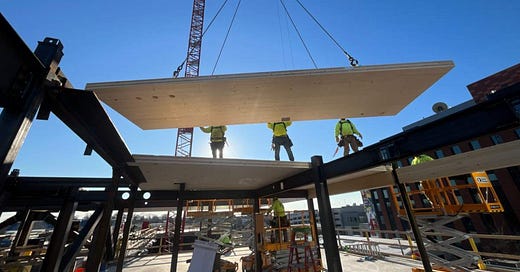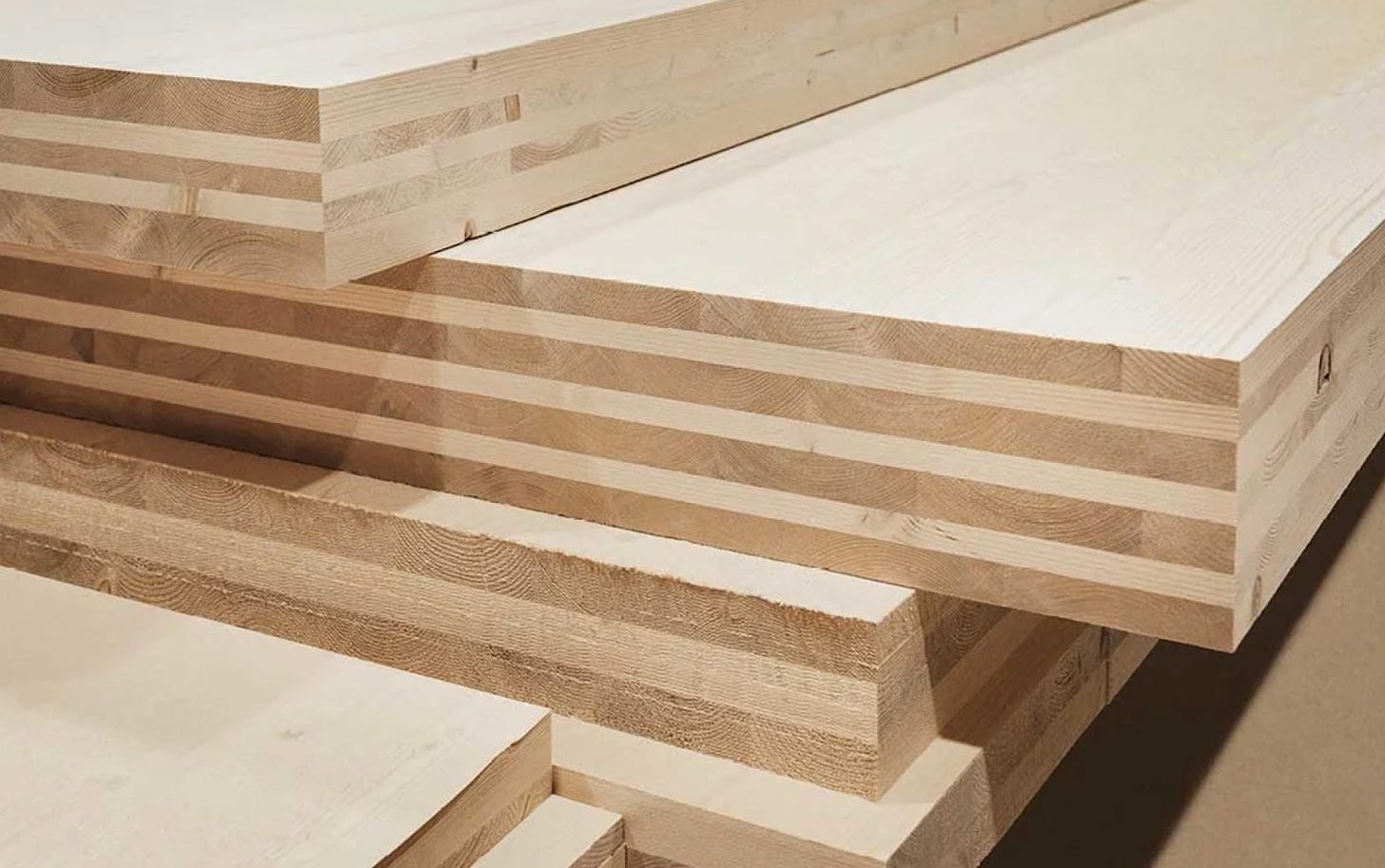A Developer’s Guide to Mass Timber
Everything you wanted to know about mass timber development - cost, timelines, procurement, construction, and more - but were too afraid to ask
Today’s Thesis Driven is a guest letter by Fed Novikov, development manager, and Nate Helbach, CEO at Neutral, a sustainable development company building the tallest mass-timber building in North America.
Most developers have heard of mass timber by now. They’ve also likely heard that it’s more sustainable yet more expensive than some traditional construction methods. And that’s about as much as most people, even real estate professionals, know about it.
This letter will provide an introduction to mass timber and the practical considerations of using it for new development, especially in the United States. We’ll address the critical items that any developer considering a mass-timber project should consider across various stages of the project, including:
Underwriting
Insurance
Design
Procurement
Introduction: What is Mass Timber?
Mass timber refers to various engineered wood products made by laminating, gluing, nailing, or doweling multiple layers of solid wood together to create exceptionally strong, precise, and lasting building components. This technology enables the use of timber in tall buildings, making it a viable or even superior alternative to less sustainable structural materials like steel and concrete. Mass timber can be implemented across various building types and asset classes: multifamily, office, educational, public, airports, and even industrial buildings.
Mass timber technology is relatively new. It was popularized in Austria in the late 1980s, and it has only recently been adopted into the International Building Code (IBC) in the 2021 IBC under Type 4 construction. The material is known for its sustainability, as most manufacturers utilize wood from sustainably managed forests. Mass timber is also gaining popularity in mid-rise and high-rise buildings, offering a high fire resistance level due to wood charring at a predictable burn rate.
Although there are many varieties of engineered wood manufacturing methods, for the sake of simplicity, we will focus this article on cross-laminated timber (CLT) and glued laminated timber (glulam). CLT is typically used to create flat panels of various sizes and thicknesses for floor slabs or walls, while glulam products are typically used as beams and columns.







